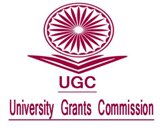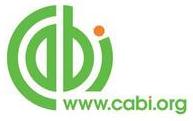Socioeconomic Status and its Association with Economic Motivation among the Dairy Entrepreneurs of Kerala
DOI:
https://doi.org/10.26725/JEE.2021.4.33.6718-6730Keywords:
Dairy Entrepreneurs; Socioeconomic variables; Kerala; lowland; highland; midland; Economic motivationAbstract
The study analyzed the socioeconomic variables of the dairy entrepreneurs of Kerala (India)and their relationship with economic motivation; specifically, in the three physiographical regions of highland, midland and lowland. Data were collected through survey using structured interview. The results revealed that maximum number of dairy entrepreneurs were male and belonged to elderly group. They were educated mostly up to secondary level and had dairying experience of fewer than 13 years. Largely herd size was between 12-22 animals; and possession of farm assets was weaker than household assets. Majority of the entrepreneurs had gross annual income of below ₹25 lakh from sale of milk and milk products; and local/private sales were more beneficial than co-operative sales. The results showed variance in the socioeconomic variables among the three divisions and hence demands exclusive entrepreneurship development strategies. Regression analysis showed that while milk production and household assets were positively related; experience and sales to dairy cooperatives were negatively related to the economic motivation of the dairy entrepreneurs.References
CESS. (1984). Resource atlas of Kerala. Centre for Earth Science Studies. Thiruvananthapuram, Kerala.
GoI. (2003). National Youth Policy. Retrieved from https://www.youthpolicy.org/national/India_2003_National_ Youth_Policy.pdf
GoI. (2011). Executive Summary of Census Kerala 2011 . Retrieved from https://www.censusindia.gov.in/2011census/PCA/PCA_Highlights/pca_highlights_file/kerala/Exeutive_Summary.pdf
GoI. (2014). Indian Standard Classification of Education . Ministry of HRD . Department of Education. Retrieved from https://www.education.gov.in/en
GoI. (2016). Agriculture Census 2015-16. Department of Agriculture, Co- operation and Farmers' Welfare. Retrieved from https://agricoop.nic.in/ en/divisiontype/agriculture-census
GoI. ( 2020 ) . 20th Livestock Census . Department of Animal Husbandry and Dairying. Government of India. Retrieved from http://dahd.nic.in/about-us/divisions/statistics
GoK. (2014). Perspective Plan 2030 – Kerala Vol. 1. Kerala State Planning Board. Government of Kerala. 226. Retrieved from http://testnew.ncaer.org/image/userfiles/file/Kerala%202030/KPP- 2030-Vol-1.pdf
GoK. (2019). Rebuild Kerala Development Programme. Government of Kerala. 239 . Retrieved from http://rebuild.kerala.gov.in/reports/RKDP_Master%2021May2019.pdf
Khuman, S.L., Hazarika, P., Saharia, K.K., Amonge, K.T. & Johari, M. (2014). Attitudinal and motivational traits on communicational behavior of tribal and non-tribal dairy farmers. Indian Journal of Veterinary and Animal Sciences., 43(3): 221-228.
MTC. (2001). Computer assisted audits – Guidelines and procedures for sales tax audits. Publication 132 (10/01). New York State department of taxation and finance. Multistate Tax Commission. 17 - 18 . Retrieved from https://www.mtc.gov/uploadedFiles/Multistate_Tax_Commission/Audit_Program/Resource/ pub132_ 1001.pdf
NDDB. (2016). Dairying in Kerala – A statistical profile 2016. Retrieved from https://www.nddb.coop/sites/default/file s/pdfs/NDDB-Kerala_11-4-16.pdf
NDDB. (2021). Per Capita Availability of Milk by States/UTs (g/day). Retrieved from https://www.nddb.coop/sites/default/files/statistics/per_capita_availability_of_milk_by_states.pdf
NIN. ( 2020 ) . Recommended dietary allowances and estimated average requirements –Nutrient requirement for adults – A report of the expert group. ICMR-National Institute of Nutrition. Hyderabad (India). 299.
Prasad, K., Savale, S., Mahantesh, M.T., Pavan, M., Burman, D. & Abraham, J. (2017). Socio-economic profile and constraints faced by dairy farmers of Wayanad district, India. International Journal of Current Microbiology and Applied Sciences,6(6): 870-874.
Sarita., Singh, S.P., Malik, A., Sharma, M. & Ahuja, R. (2016). Socio-economic and psychological characteristics of dairy farmers of Hisar district. International Journal of Science, Environment and Technology,5: 3466-3472.
Sivakumar, P.S., Sontakki, B.S., Sulaiman, R.V., Saravanan, R. & Mittal, M. (2017). Manual on good practices in extension research and evaluation. AESA.12-15.
Sreeram, V., Jancy, G. & Shyam, S.S.R. (2018). Constraints perceived by dairy farmers of Kerala State. Indian Journal of Dairy Science,71(1): 102-106.
Supe & Singh. (1969). Dynamics of rational behaviour of Indian farmers. New Heights Publishers and Distributors. New Delhi.
Downloads
Published
How to Cite
Issue
Section
License
Copyright (c) 2021 https://creativecommons.org/licenses/by-nc-sa/4.0/

This work is licensed under a Creative Commons Attribution-NonCommercial-ShareAlike 4.0 International License.
Authors who publish with JEE agree to the following terms:
- Authors retain copyright and grant JEE right of first publication with the work simultaneously licensed under a Creative Commons Attribution License that allows others to share the work with an acknowledgement of the work's authorship and initial publication in this journal.
- Authors are able to enter into separate, additional contractual arrangements for the non-exclusive distribution of the journal's published version of the work (e.g., post it to an institutional repository or publish it in a book), with an acknowledgement of its initial publication in this journal.
- Authors are permitted and encouraged to post their work online (e.g., in institutional repositories or on their website) prior to and during the submission process, as it can lead to productive exchanges, as well as earlier and greater citation of published work (See The Effect of Open Access).
Extension Education Society
https://creativecommons.org/licenses/by-nc-sa/4.0/
This work is licensed under a Creative Commons Attribution-NonCommercial-ShareAlike 4.0 International License.













.png)

